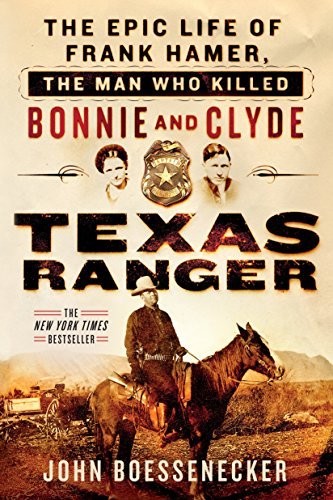The legendary outlaws Bonnie Parker and Clyde Barrow, figures romanticized and vilified in equal measure, continue to captivate nearly a century after their crime spree terrorized the American Midwest. While their exploits are often depicted in Hollywood glamour, the reality was a desperate and violent existence, constantly on the move. A crucial, and often overlooked, chapter in their saga unfolded in Joplin, Missouri – a period marked by both their infamous photographs and a deadly shootout that further cemented their notoriety. And central to their escape and lifestyle? The automobile.
Driven by a desire to understand the true story behind the myth, and partly inspired by the Netflix movie “The Highwaymen,” delving into historical accounts reveals a more nuanced picture than popular culture often portrays. John Boessenecker’s “Texas Ranger: The Epic Life of Frank Hamer, the Man Who Killed Bonnie and Clyde” offers a particularly grounded perspective. Hamer, the legendary Texas Ranger who eventually brought their reign to an end, dedicated significant effort to understanding and tracking the Barrow Gang. His insights highlight the gang’s operational patterns, revealing their cyclical movements across the central states, often returning to familiar territories like “wild horses circling to their old range,” as Hamer noted.
Contrary to local lore suggesting a lengthy stay, Bonnie and Clyde’s time in Joplin was brief, a mere two weeks in April 1933. They rented an apartment above a garage at 3347½ Oak Ridge Drive, seeking a vantage point to survey their surroundings. Joining them were Clyde’s brother Buck, his wife Blanche, and W.D. Jones. This Joplin hideout became significant not just for the events that transpired there, but for offering a glimpse into their lives beyond the headlines.
The gang’s activities, however, attracted unwanted attention. Suspicions of bootlegging led neighbors to alert the authorities. On April 13th, five lawmen arrived to investigate. Ill-equipped with .38 revolvers against the Barrow gang’s stolen arsenal of shotguns and Browning Automatic Rifles (BARs), the confrontation turned deadly. Constable John Wesley Harryman and Detective Harry McGinnis were killed, and W.D. Jones was wounded. The gang escaped in their car, leaving behind more than just bloodshed.
Inside the Joplin apartment, investigators discovered a trove of personal items: Bonnie’s poetry, firearms, and crucially, a Brownie camera containing undeveloped film. When the “Joplin Globe” published these photographs, they became instantly iconic. Images of Bonnie and Clyde posing with guns, Bonnie with a cigar and foot resting defiantly on a car fender, fueled their outlaw image across the nation. These were not just criminals; they were young, rebellious, and undeniably photogenic, driving fast cars and challenging societal norms.
The Joplin apartment, built in 1928, has seen various incarnations, including a bed and breakfast. Today, privately owned, it’s even available for rent on platforms like Air BnB, reportedly still bearing the marks of the shootout in the form of bullet holes. This physical location serves as a tangible link to the past, allowing people to connect with the Bonnie and Clyde story in a unique way.
Further exploration of their Joplin connection leads to the Joplin Museum Complex. Here, amongst local artifacts, a section is dedicated to Bonnie and Clyde. On display are personal effects of the gang and the very door law enforcement breached on that fateful day. The museum offers a more curated and historical context to the Joplin shootout, planning expansions to further enrich the exhibit.
Among the items recovered from Bonnie and Clyde’s car after the Joplin encounter were personal belongings, some of which were kept by law enforcement as was custom at the time. These artifacts, scattered and sometimes surfacing years later, offer fragments of their lives.
The story of Bonnie and Clyde is inextricably linked to the cars of the 1930s. Their Ford V8s were more than just transportation; they were symbols of freedom, speed, and defiance. These powerful vehicles enabled their escapes, contributing to their legend as they outmaneuvered law enforcement across state lines. While the Joplin incident itself might be known for the apartment and the shootout, the underlying element that allowed Bonnie and Clyde to reach Joplin, and escape it, was the car. It was their constant companion, their getaway vehicle, and ultimately, their rolling stage for a tragically short, but unforgettable performance in American history. Visiting Joplin today allows one to walk in the footsteps of these infamous figures, to see the apartment, the museum, and to reflect on a time when the car became an integral part of the American outlaw narrative.
